The new 2024 Subaru Crosstrek Wilderness is similarly deceiving in the automobile world. Even with acres of plastic body wrapping, the Crosstrek’s tall-boy hatchback posture and smaller size don’t imply all-terrain ability when compared to boxy body-on-frame off-roaders like the Jeep Wrangler and Ford Bronco.
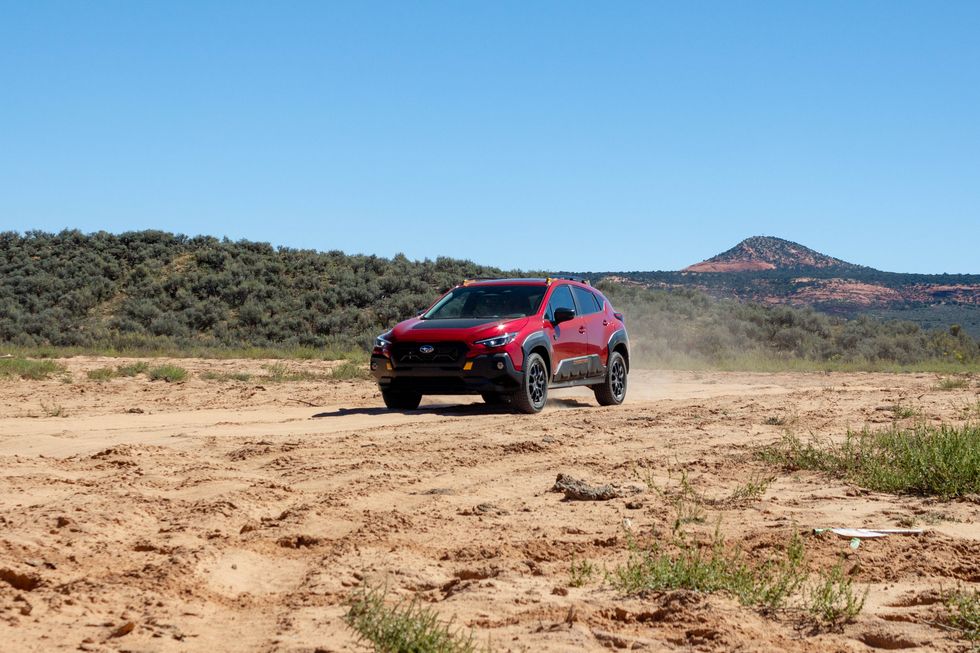
A surprisingly spry and adept machine, capable of climbing steeper hills and traversing more treacherous terrain than expected while maintaining the comfortable on-road demeanor of a standard Crosstrek.
2024 Subaru Crosstrek Wilderness Interior
While the new Crosstrek is roughly the same size and load capacity as the previous model, Subaru has modified the seat design to be more comfortable and has added more sound-deadening materials to dampen sounds and calm vibrations.

The cabin remains blatantly utilitarian, and consumers looking for a more sophisticated flair will be disappointed by the Subaru’s basic design. Leather upholstery is offered, although most trims come with fabric upholstery, with patterned inserts and silver stitching on higher-end versions.
The front doors include large pockets for storing water bottles and other loose objects, and the cargo compartment has 20 cubic feet of room when the rear seats are up and 55 cubic feet when the rear seats are folded down.
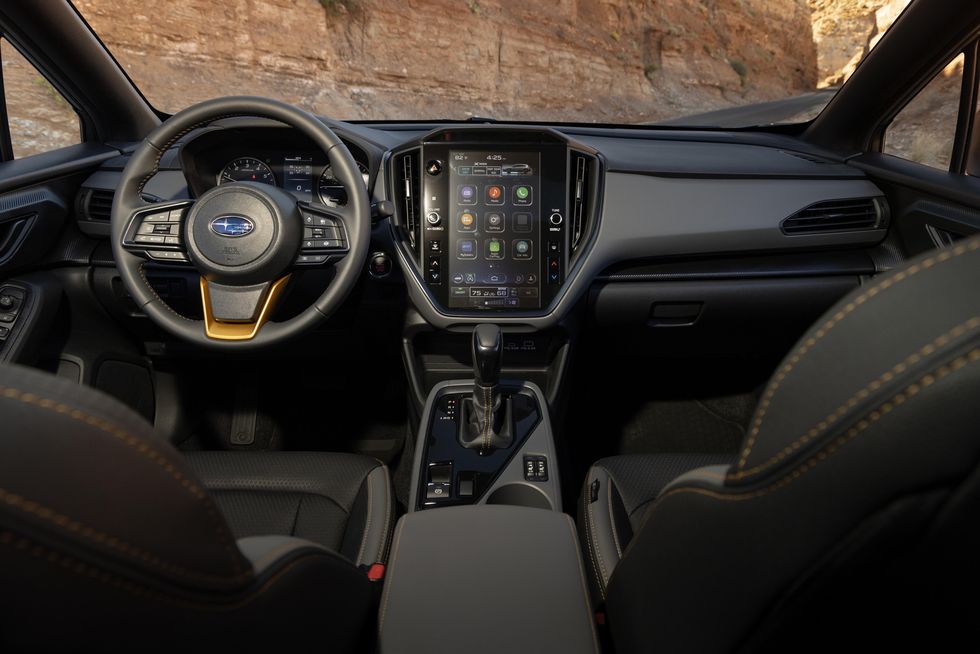
The same 11.6-inch infotainment display present in other Subaru vehicles, such as the Outback station wagon and the WRX sports sedan, will be available in the 2024 Crosstrek, but it will not be standard. The cheapest model has a smaller 7.0-inch touchscreen, but both feature Apple CarPlay and Android Auto.
2024 Subaru Crosstrek Wilderness Exterior
The Wilderness badge unlocks a slew of new features. Copper highlights on the exterior and interior brighten the Crosstrek’s look, and the comfy seats are upholstered in Subaru’s water-resistant StarTex synthetic material. Rubber floor mats are standard. There are also significant alterations.
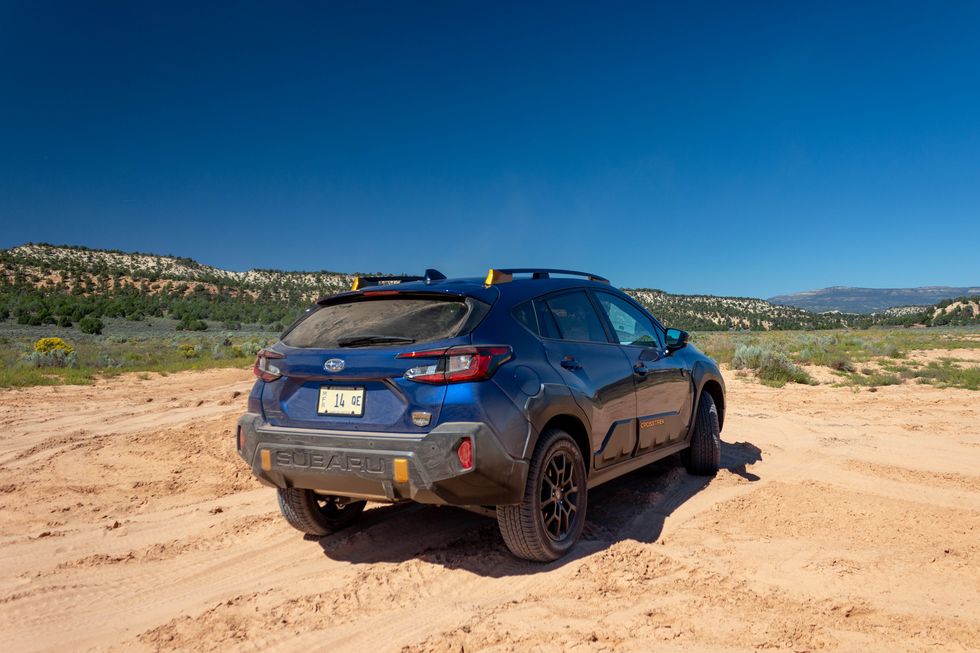
The Wilderness has 9.3 inches of ground clearance thanks to a 0.6-inch elevation provided by a reworked suspension with bigger springs. This outperforms other off-road-oriented crossovers, such as the Jeep Compass Trailhawk (8.6 inches) and the Ford Bronco Sport Badlands (up to 8.8 inches).
The increased ride height increases approach and departure angles, increasing them from 18.0 to 20.0 degrees and 30.1 to 33.0 degrees, respectively. The breakover angle rises as well, rising from 19.7 to 21.1 degrees.
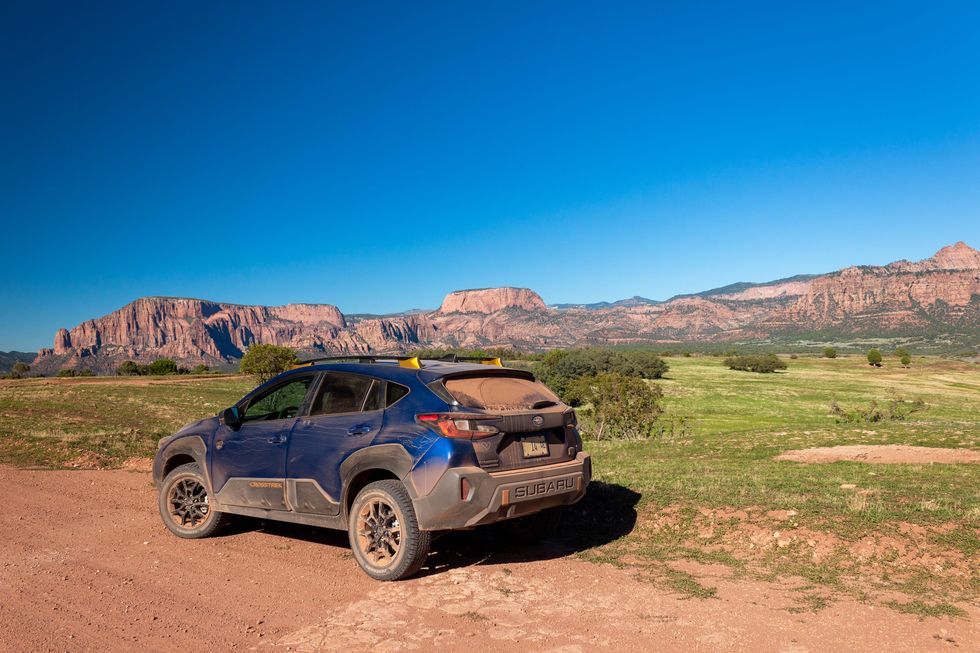
Despite the fact that the engine remains unaltered, the towing capacity improves from 1500 to 3500 pounds thanks to a more powerful radiator fan and a new oil cooler.
The increased towing capability should allow users to pull a small boat or camper for outdoor adventures. The beefed-up roof rack has a 700-pound static load capacity, so more daring owners may attach a roof-top tent.
Most of the Wilderness’ off-road ability is likely due to its Yokohama Geolandar A/T tires. The beefier treads, mounted on black 17-inch wheels, offered adequate grip on uneven ground and survived severe hits from pebbles.
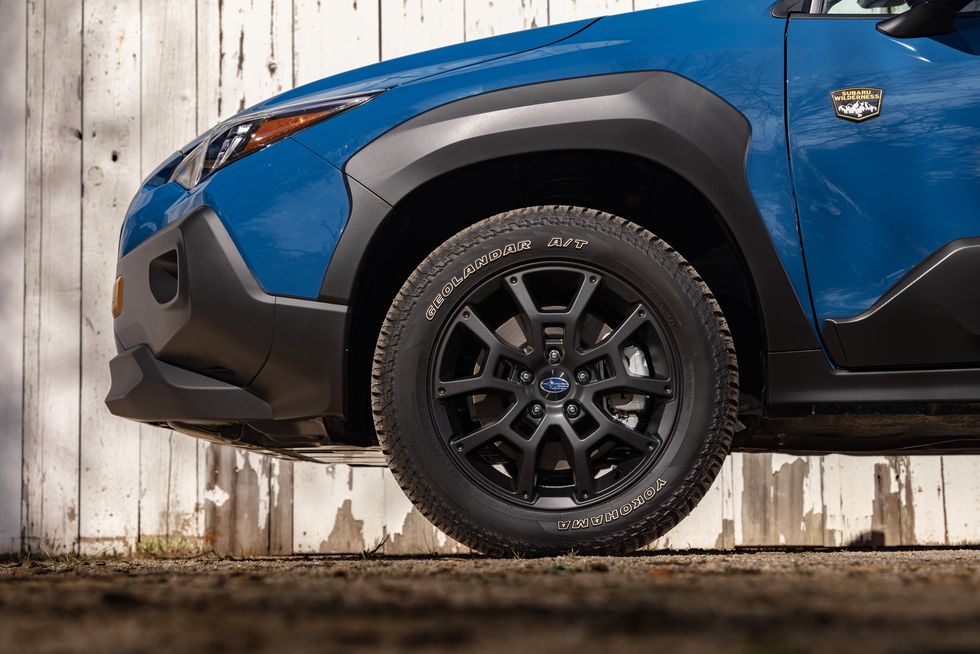
Yet, the all-terrain tires had no detrimental influence on the road ride or caused a notable rise in road noise. The Wilderness, like other Crosstrek grades, is a soft-riding vehicle, and the cushioned chassis made it seem stable at high speeds over rougher dirt roads.
2024 Subaru Crosstrek Wilderness Performance
The Wilderness is powered by the 2.5-liter flat-four engine that is offered on the basic Crosstrek, and it produces 182 horsepower and 178 pound-feet of torque. Throughout town, acceleration is decent, but brief on-ramps can be nerve-racking.
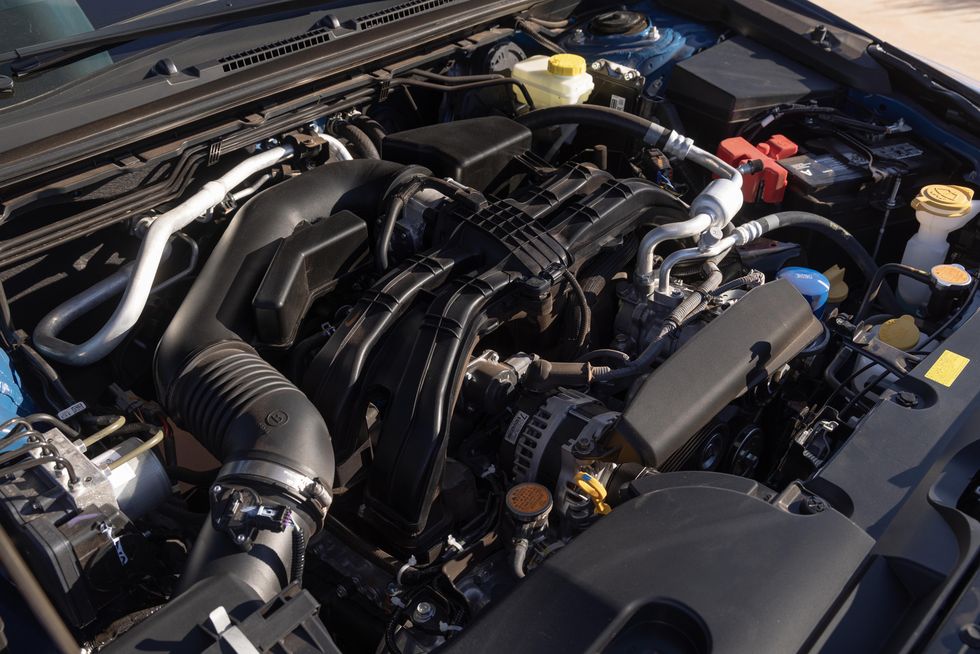
In our tests, a Crosstrek Limited with the same engine took 8.1 seconds to reach 60 mph. The Wilderness should perform similarly, except it has a shorter final-drive ratio (4.111:1 versus 3.70:1), allowing it to readily rush up steep inclines and crawl through thick sand with a determined driver at the wheel.
The trade-off is lower fuel economy: the Wilderness’ EPA combined rating of 27 mpg is 2 mpg lower than the normal 2.5-liter Crosstrek’s estimate.
The Wilderness, like other Crosstreks, receives a version of Subaru’s X-Mode, which modifies the gearbox, throttle, and torque distribution for different terrain. For most of our voyage, we employed the Deep Snow/Mud mode, which expertly distributed power to the wheels with the best grip.
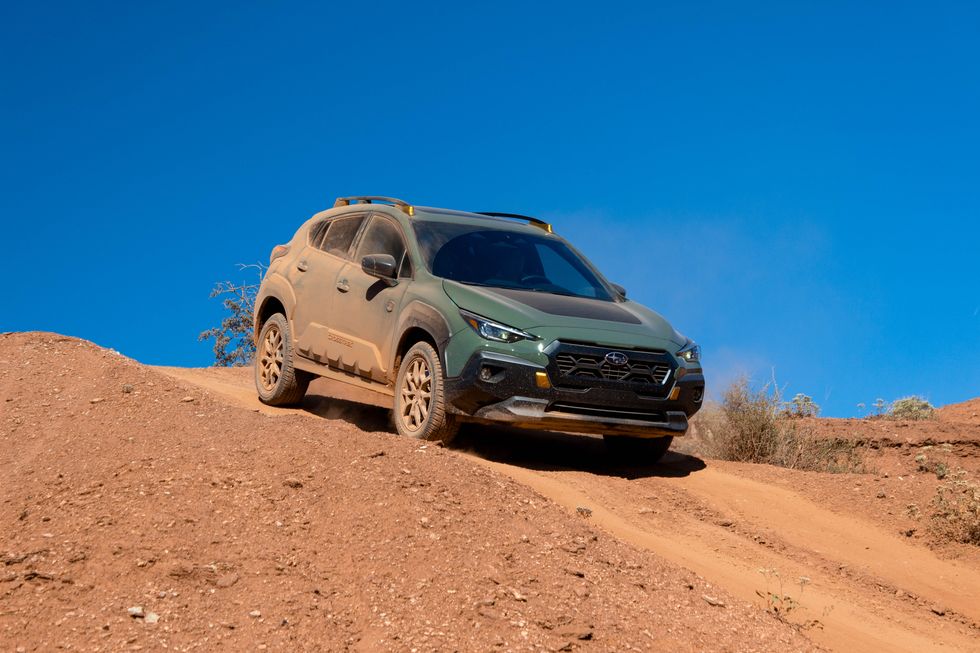
While in X-Mode, hill-descent control is activated when the speed is less than 12 mph. The crossover’s computers firmly regulate the vehicle’s speed, providing a safety net on steep descents and freeing up the driver’s attention to maneuver around pointed rocks and deep ruts.
The handling of the Crosstrek seems shaky on pavement, especially in long, sweeping turns, but the reduced effort proved appreciated off-road, reducing tiredness after several hours of exploring.
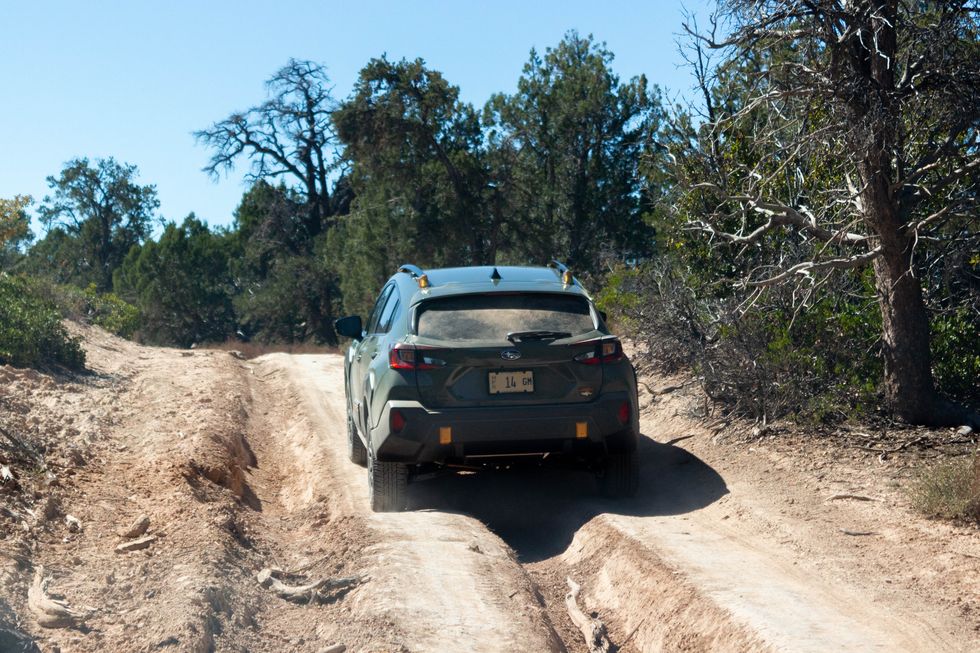
The added capabilities of the Wilderness do not drive up the price of the Crosstrek. The Wilderness starts at $33,290, which is just $1100 more than the Limited variant and less than all-terrain competitors like the Compass Trailhawk ($37,990) and the bigger Bronco Sport Badlands ($39,985).
The Crosstrek Wilderness may not climb rocks like a Wrangler or bounce over dunes like a Bronco, and its 2.5-liter engine could use a few more horses, but the flexible crossover’s off-road performance demonstrated that the Wilderness is more than just a pretty face.

